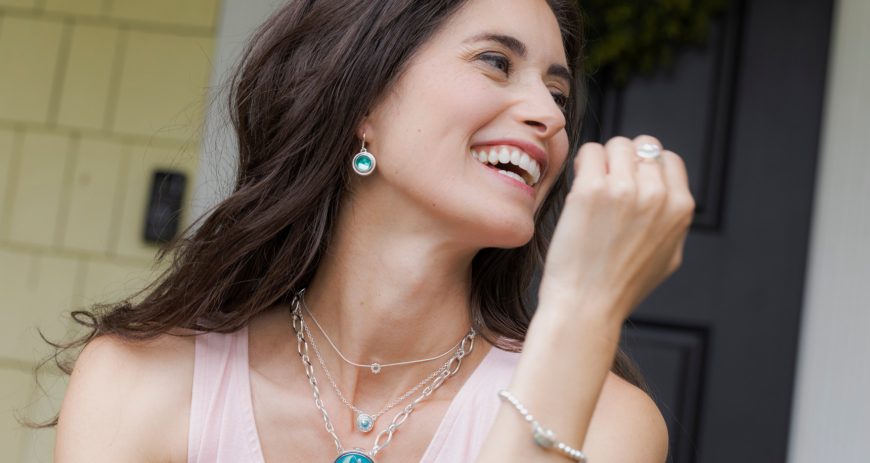What Is the March Birthstone?
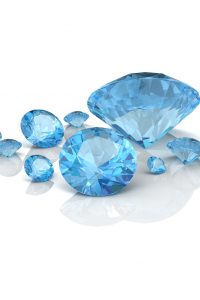 The March birthstone is the aquamarine. This semiprecious gemstone and member of the beryl family is not only March’s birthstone, but also Colorado’s state gem since 1971.
The March birthstone is the aquamarine. This semiprecious gemstone and member of the beryl family is not only March’s birthstone, but also Colorado’s state gem since 1971.What Are the Characteristics of the March Birthstone?
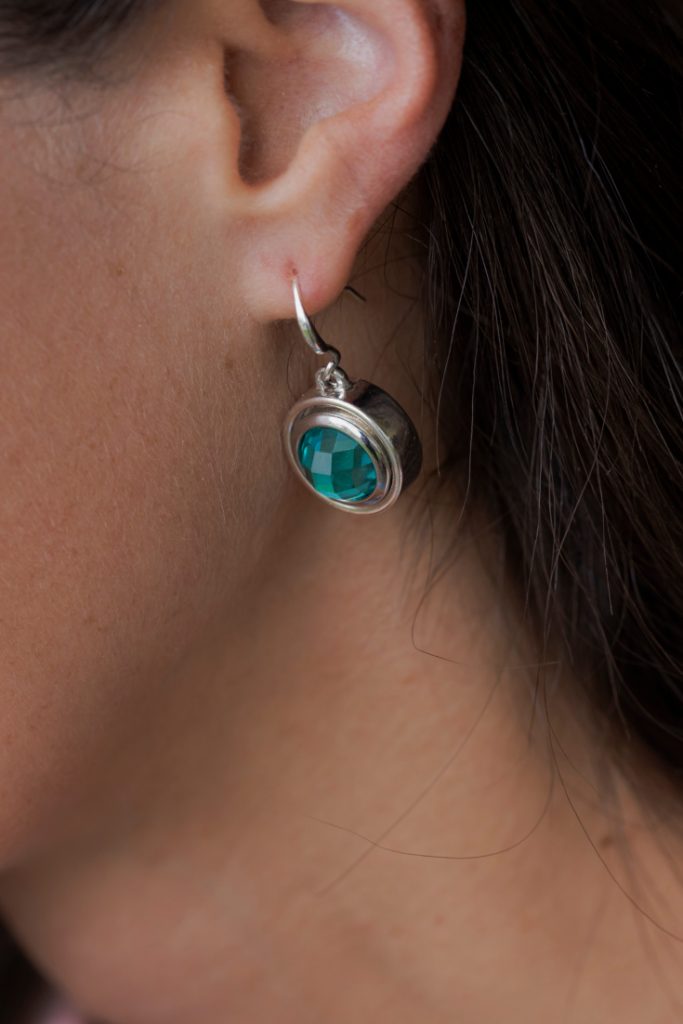
Classic Dotlet Earrings with Aquamarine Solitaire Dotlets
A beautiful blue-green, the aquamarine receives its coloring from small amounts of ferrous iron. The hues of the aquamarine can range from a light blue-green to a fairly dark blue. There is a chance that you could come across a gem being sold as a “white aquamarine,” but those stones are most likely colorless beryls that are also known as goshenites (“Aquamarine Jewelry”).
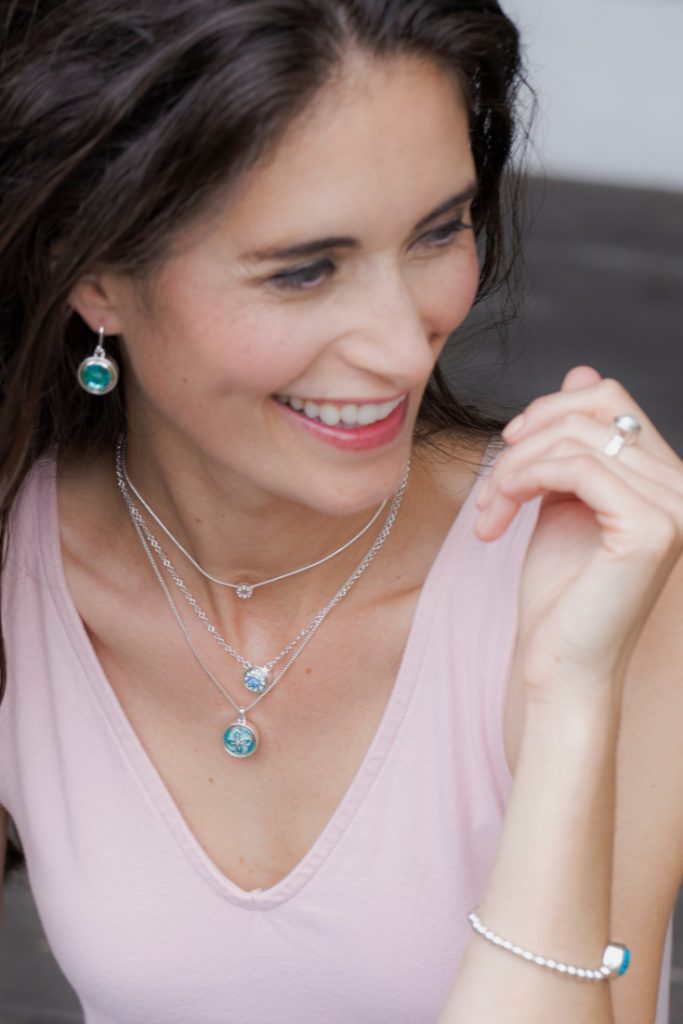 Aquamarine inclusions, or interesting features, include long, hollow tubes. If an aquamarine has enough hollow tube inclusions and it’s cut just the right way, it can show chatoyancy—the “cat’s eye” design—or asterism—a star-shaped design. Some aquamarines have “snow stars,” which are star-shaped liquid droplets. Gem collectors highly value cat’s eye aquamarines; however, star aquamarines are even more rare (“Aquamarine Jewelry”).
Aquamarine inclusions, or interesting features, include long, hollow tubes. If an aquamarine has enough hollow tube inclusions and it’s cut just the right way, it can show chatoyancy—the “cat’s eye” design—or asterism—a star-shaped design. Some aquamarines have “snow stars,” which are star-shaped liquid droplets. Gem collectors highly value cat’s eye aquamarines; however, star aquamarines are even more rare (“Aquamarine Jewelry”).
- Color: An aquamarine with a deeper blue will be better quality and will have a higher value.
- Clarity: The more transparent and clear the aquamarine is, the more valuable it will be. Basically, the fewer inclusions, the better!
- Cut: If the blues of an aquamarine are dazzling and brilliant, it’s been cut very well.
- Carat size: As with all gemstones, the bigger the size, the more valuable it will be (“Aquamarine Stone”).
What Is the History of the March Birthstone?
The popular aquamarine received its name from the Latin aqua for water and marina meaning “of the sea” (“Aquamarine”).
Is the March birthstone the gem of the sea? Well, in Western cultures, due to the aquamarine’s name and color, the gemstone is strongly associated with the sea, with many folk stories about the protection of sailors and fishermen (“Aquamarine Jewelry”). In fact, it was believed to be a treasure of the mermaids, and sailors used it as a good-luck piece while they were on the open sea (“Aquamarine Stone”).
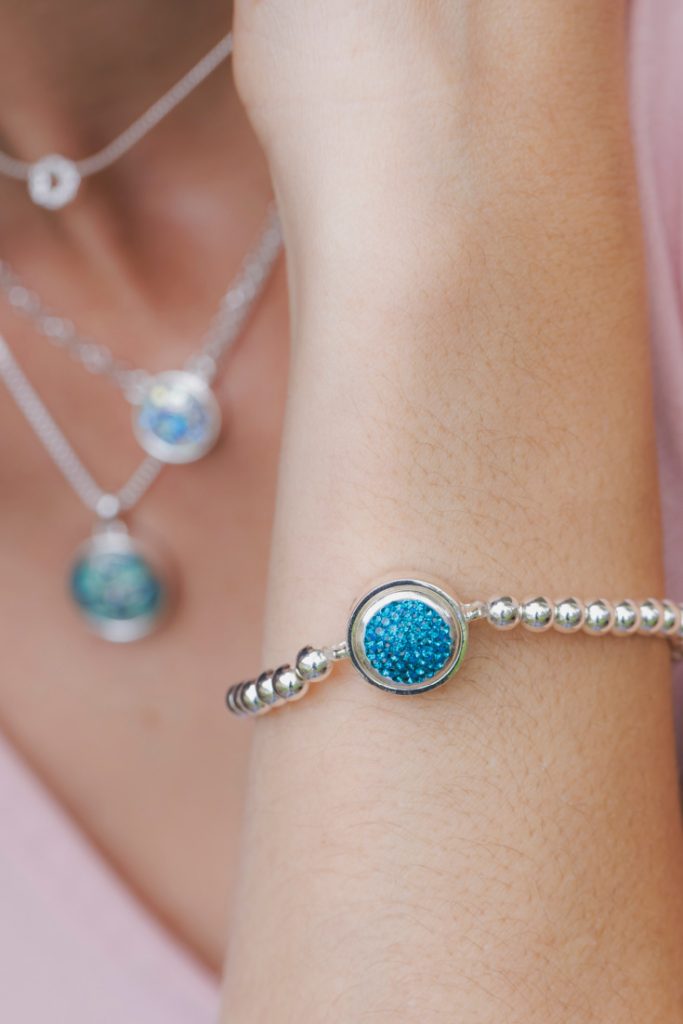
Pearl Beaded Original Bracelet with Aquamarine Couture Original Dot
Ancient Romans also believed that the aquamarine could safeguard seafarers; additionally, they used the aquamarine to protect people from sickness. The Chinese used the aquamarine to make seals, figurines, and engravings; while the Japanese used it to make netsuke—miniature sculptures (“Aquamarine”).
Where Can You Find the March Birthstone?
The main mines for the aquamarine are in Brazil. But you can also find the aquamarine in Nigeria, Madagascar, Zambia, Pakistan, and Mozambique (“Aquamarine Overview”).
Shop aquamarine jewelry today.
And to read more about birthstones, check out our Birthstone Guide.

